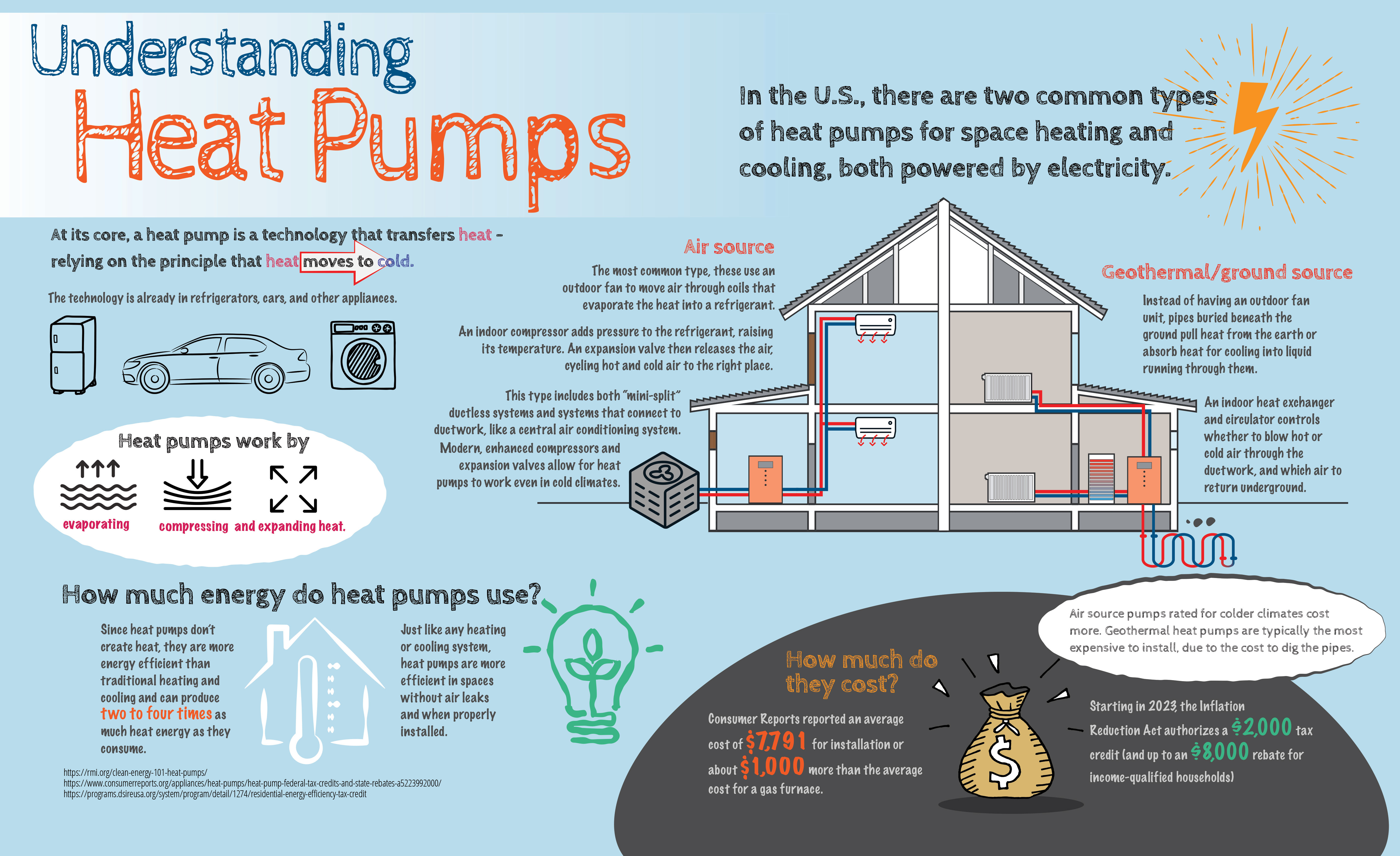At its core, a heat pump is a technology that transfers heat – relying on the principle that heat moves to cold. The technology is already in refrigerators, cars, and other appliances.
Heat pumps work by evaporating, compressing, and expanding heat.
In the U.S., there are two common types of heat pumps for space heating and cooling, both powered by electricity.
- Air source: The most common type, these use an outdoor fan to move air through coils that evaporate the heat into a refrigerant. An indoor compressor adds pressure to the refrigerant, raising its temperature. An expansion valve then releases the air, cycling hot and cold air to the right place. This type includes both “mini-split” ductless systems and systems that connect to ductwork, like a central air conditioning system. Modern, enhanced compressors and expansion valves allow for heat pumps to work even in cold climates.
- Geothermal/ground source: Instead of having an outdoor fan unit, pipes buried beneath the ground pull heat from the earth or absorb heat for cooling into liquid running through them. An indoor heat exchanger and circulator controls whether to blow hot or cold air through the ductwork, and which air to return underground.
How much energy do heat pumps use?
Since heat pumps don’t create heat, they are more energy efficient than traditional heating and cooling and can produce two to four times as much heat energy as they consume. Just like any heating or cooling system, heat pumps are more efficient in spaces without air leaks and when properly installed.
How much do they cost?
Consumer Reports reported an average cost of $7,791 for installation, or about $1,000 more than the average cost for a gas furnace. Air source pumps rated for colder climates cost more. Geothermal heat pumps are typically the most expensive to install, due to the cost to dig the pipes.
Starting in 2023, the Inflation Reduction Act authorizes a $2,000 tax credit (and up to an $8,000 rebate for income-qualified households) to install them.


